|
Tao Te Ching
THE TAOISM OF LAO TZU
|
Famous TaoistsThe Most Prominent of the Tao PhilosophersTaoism as we know it started with the book Tao Te Ching and its legendary writer Lao Tzu. That was somewhere in the 6th, 5th or 4th century BC — scholars are uncertain. The emergence of Taoism is hidden in the clouds of the distant past. As time passed, though, the prominent Taoists who followed were documented with greater certainty. Well, most of them. Taoism remains elusive. Anyway, here are some of them.
Lao Tzu (Laozi)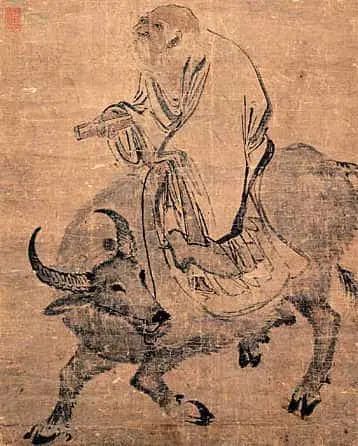 Lao Tzu (6th century?). In this much later ink painting he is shown riding off on a water buffalo, the most common Lao Tzu motif.
But many historians doubt that Lao Tzu existed at all. His name simply means Old Master, so it's honorary. The first historical source mentioning him in any detail is from around 90 BC, several hundred years after he was supposed to have lived. There is no consensus among Sinologists about the matter, so you just have to make up your own mind.
I have written extensively about what is known of him here: Lao Tzu
Lieh Tzu (Liezi)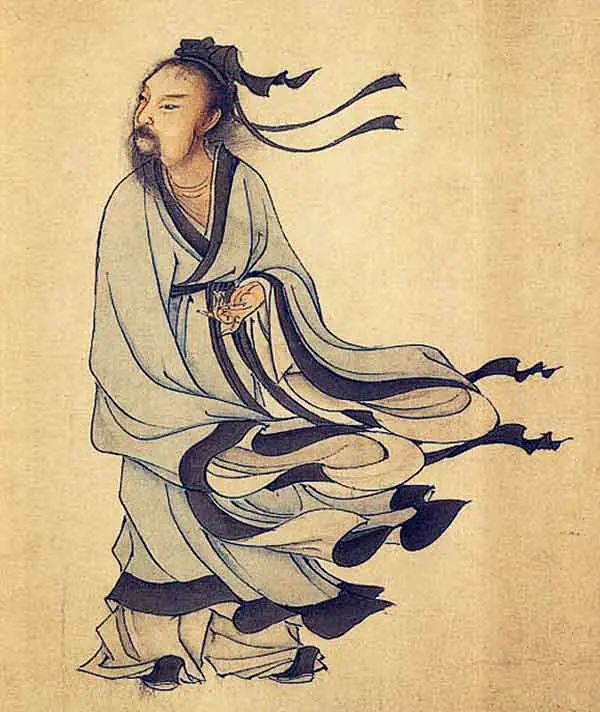 Lieh Tzu (5th century BC?) traveling on the wind, an ability Chuang Tzu accredited him with.
Lieh Tzu is accredited with a Taoist text given his name, probably compiled as late as in the 4th century CE, which is 700 years after his assumed lifetime. But it was mentioned in some sources a few hundred years prior to that. In the 8th century CE, the Chinese emperor proclaimed it one of the Taoist classics, alongside the Tao Te Ching and Chuang Tzu.
The text, which consists of eight chapters, was partially translated to English by Lionel Giles in 1912. His translation can be found on Wikisource: Taoist teachings from the book of Lieh TzuThe first complete translation was done in 1960 by A. C. Graham (click the title to see the book at Amazon): The Book of Lieh-TzuSince the turn of the century, three more complete translations have been published: Eva Wong in 2001Li Jian Guo and Liang Xiao Peng in 2005Thomas Cleary in 2011The book shares several of its ingredients with the text of Chuang Tzu. The latter refers to Lieh Tzu, the text as well as the person, several times. Because of this and some other indications, the most probable is that the Lieh Tzu text is a later compilation inspired by Chuang Tzu, falsely pretending to precede him. In the history of literature, that would not be a first. The Lieh Tzu text is regarded as very concrete and direct in its Taoist message. That's evident in this quote about death from chapter 7, in the 1912 translation by Anton Forke (who only translated this chapter): That in which all beings differ is life, that in which they are all alike is death. During life there is the difference of intelligence and dullness, honour and meanness, but in death there is the equality of rottenness and putrefaction. Neither can be prevented. Although intelligence and dullness, honour and meanness exist, no human power can affect them, just as rottenness and putrefaction cannot be prevented. Human beings cannot make life and death, intelligence and stupidity, honourableness and meanness, what they are, for all beings live and die equally, are equally wise and stupid, honourable and mean. Some die at the age of ten, some at one hundred. The wise and benevolent die as the cruel and imbecile. In life they are known as Yao and Shun [the two model emperors of antiquity]; dead they are so many bones which cannot be distinguished. But if we hasten to enjoy our life, we have no time to trouble about what comes after death.
Chuang Tzu (Zhuangzi)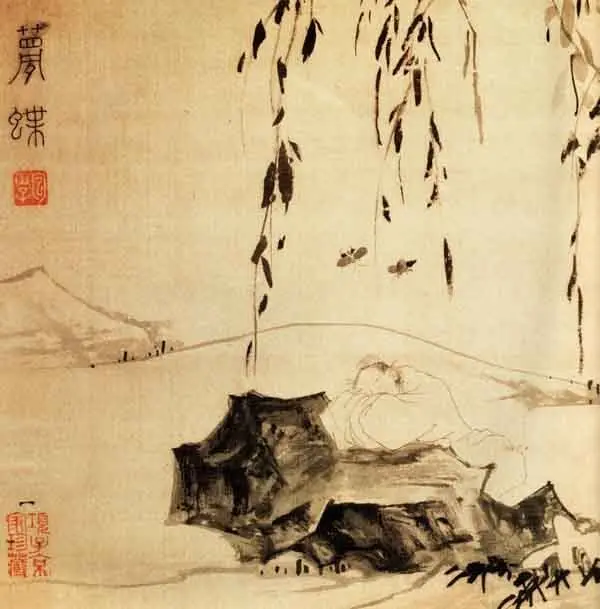 Chuang Tzu (369–286 BC) and the butterfly, a very common Chuang Tzu motif, inpired by a passage of his text — see below. This ink painting is by Lu Zhi, c. 1550.
According to the above mentioned historian, Chuang Tzu was a very learned man, who adapted the thoughts and ideas of Lao Tzu, expressing them with anecdotes and examples of great humor. He targeted the disciplined views of Confucianism, which dominated China already at that time, mocking them in a satirical way. Chuang Tzu had no appreciation of fancy titles and elevated duties, as is clear from what Szu-ma Ch'ien tells us about his response, when the king of Chu wanted him as a chief minister: Have you not seen the victim-ox for the border sacrifice? It is carefully fed for several years, and robed with rich embroidery that it may be fit to enter the Grand Temple. When the time comes for it to do so, it would prefer to be a little pig, but it can not get to be so. Go away quickly, and do not soil me with your presence. I had rather amuse and enjoy myself in the midst of a filthy ditch than be subject to the rules and restrictions in the court of a sovereign. The text carrying Chuang Tzu's thoughts and anecdotes bears his name as the title. It consists of 33 chapters, divided into three groups: the first seven are the Inner Chapters, the following 15 (8-22) are the Outer Chapters, and the remaining eleven (23-33) are called the Miscellaneous Chapters. Tradition has it that he wrote the Inner Chapters, his students the Outer ones, and others the remainder. That's far from ascertained. Some of the anecdotes in his text have become legendary, especially the paradox of the butterfly ending chapter 2, which is the most favored motif in artistic representation of Chuang Tzu: Formerly, I, Kwang Kâu, dreamt that I was a butterfly, a butterfly flying about, feeling that it was enjoying itself. I did not know that it was Kâu. Suddenly I awoke, and was myself again, the veritable Kâu. I did not know whether it had formerly been Kâu dreaming that he was a butterfly, or it was now a butterfly dreaming that it was Kâu. But between Kâu and a butterfly there must be a difference. This is a case of what is called the Transformation of Things.
Here (on this website) is the complete translation of all 33 chapters of Chuang Tzu, by James Legge: Chuang Tzu
Chang Tao-ling (Zhang Daoling)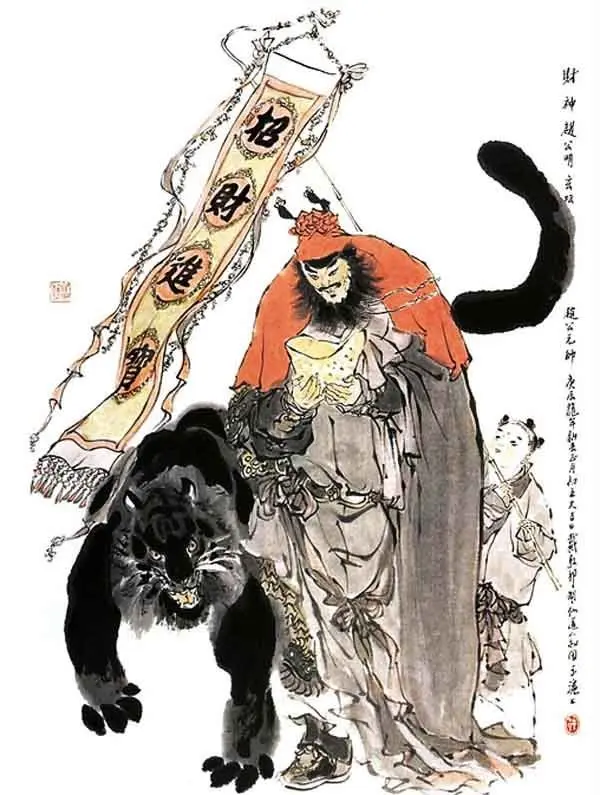 Chang Tao-ling (34-156, supposedly), by Ye Xiong. He is often depicted riding a tiger. This, though, seems to be a panther.
Religious Taoism focused on rituals and mysticism, but Chang Tao-ling also had a structured mind, credited with founding the sect called The Way of Five Pecks of Rice (also called, less modestly, The Way of the Celstial Masters) in 142 CE. Its name was derived from the rule that every new member had to donate that amount of rice. It was the first organized form of Taoism. It still exists. Chang Tao-ling and his movement based their teaching on the Tao Te Ching, but interpreted it quite freely. Their idea of immortality stemmed mainly from the last lines of chapter 33: "Those who die without being forgotten get longevity." At the time of Chang Tao-ling, though, the line was understood as: "Those who die without perishing get longevity." It's only with the 1970s finding of the old Tao Te Ching manuscripts in Mawangdui that the ancient reading of the line has been discovered. Lao Tzu had no hope that one could escape death.
No writing of Chang Tao-ling remains, but the Tao Te Ching commentary called Xiang'er is supposed to be greatly influenced by his thoughts. It was reported to be written around 200 CE by his grandson Chang Lu (Zhang Lu). An English translation of it can be found in this book (click on the title to see the book at Amazon): Early Daoist Scriptures
Wang Pi (Wang Bi)It may not be completely adequate to call Wang Pi (226-249 CE) a Taoist, but his brilliantly commented version of the Tao Te Ching has since his time been the most influential one. It's also from his book the most established version of the Tao Te Ching was extracted. Around the world, it had little competition until the two Mawangdui manuscripts were discovered in the 1970s. Still, the Wang Pi version largely stands its ground.Wang Pi was a prodigy, completing his highly respected commentaries on the Tao Te Ching as well as the I Ching, although he only lived to the age of 23. He also wrote a commentary on the Confucian Analects, which only remains in fragments.
He regarded himself as a Confucian. In his Tao Te Ching commentaries he had the ambition to explain the text in a way that would somewhat agree with Confucianism, without misrepresenting it. An authoritative English translation of Wang Pi's commented Tao Te Ching was published in 2003, written by Rudolf G. Wagner (click on the title to see the book at Amazon): Chinese Reading of the Daodejing
Ko Hung (Ge Hong)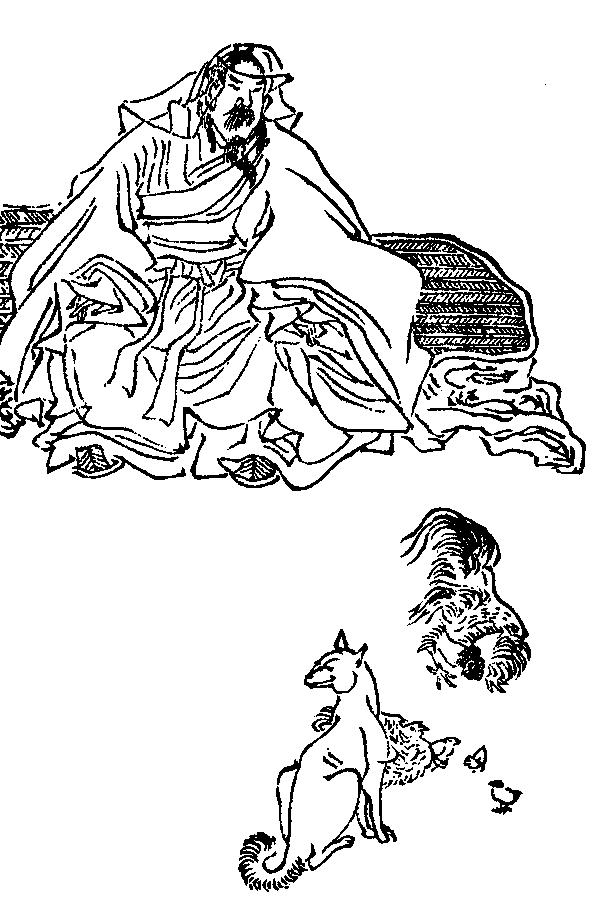 Ko Hung (283-343 CE). Japanese illustration from 1923.
In an extended period of reclusion from worldly affairs, Ko Hung wrote his magnum opus The Master Who Embraces Simplicity (Pao-p'u-tzu or Baopuzi) in two parts: Inner Chapters and Outer Chapters. The former deals with his Taoist philosophy and the methods he propagates in order to reach immortality, whereas the latter deals in mainly Confucian ways with worldly problems and their possible solution.
The Inner Chapters have attracted significantly more interest outside China than the Outer Chapters. They were translated in their entirety by James R. Ware in 1966 (click the title to see the book at Amazon): The Nei Pien of Ko HungThe Outer Chapters are still waiting for their complete translation. Another book by Ko Hung on the subject of immortality is Biographies of Divine Transcendents (Shen-hsien chuan or Shenxian zhuan). It has been translated by Robert Ford Campany in 2002: Divine Transcendents
Taoist CanonTao Tsang (Daozang) is an official Chinese collection of major Taoist texts, which has grown to impressive complexity since it was first assembled by Taoist monks circa 400 CE. They include numerous commentaries on the two ancient sources of Lao Tzu and Chuang Tzu. Here is more about what the compilation contains, on a website by David K. Jordan:The Daoist Canon
About CookiesMy Other Websites:I Ching OnlineThe 64 hexagrams of the Chinese classic I Ching and what they mean in divination. Try it online for free.
Qi Energy ExercisesThe ancient Chinese life energy qi (chi) explained, with simple instructions on how to exercise it.
Life EnergyThe many ancient and modern life force beliefs all over the world explained and compared.
Taoismen på svenska
Other Books by Stefan StenuddClick the image to see the book at Amazon (paid link).
The Greek philosophers and what they thought about cosmology, myth, and the gods. |
 Tao Te Ching
Tao Te Ching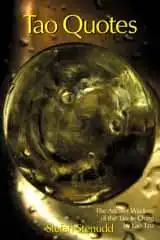 Tao Quotes
Tao Quotes Fake Lao Tzu Quotes
Fake Lao Tzu Quotes Cosmos of the Ancients
Cosmos of the Ancients Qi — Increase Your Life Energy
Qi — Increase Your Life Energy Aikido Principles
Aikido Principles Life Energy Encyclopedia
Life Energy Encyclopedia Archetypes of Mythology
Archetypes of Mythology Stefan Stenudd
Stefan Stenudd